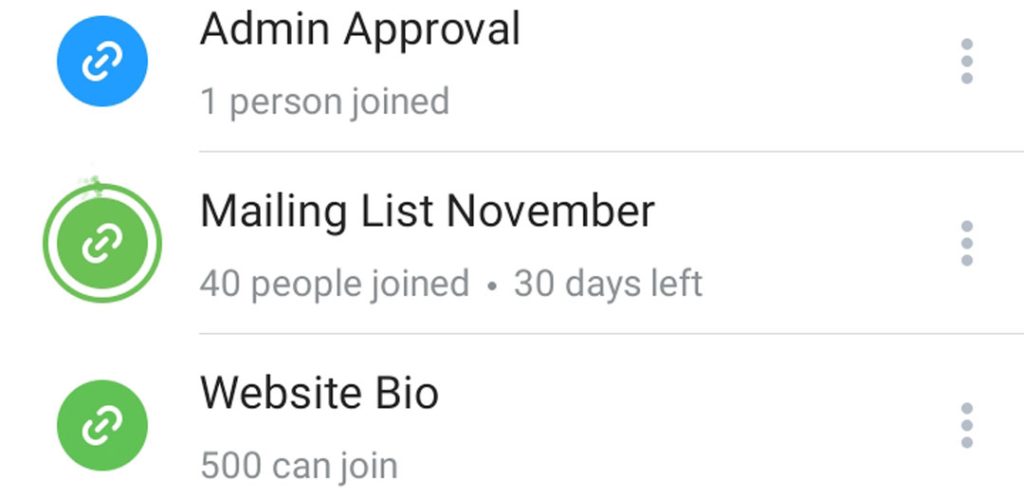
To transfer money to Trust Wallet, copy your wallet address, paste it into the sending platform, specify the amount, and confirm the transaction.
Understanding Trust Wallet
What is Trust Wallet
Trust Wallet is a decentralized, open-source mobile wallet designed for secure storage and management of various cryptocurrencies. Developed in 2017 and acquired by Binance, it allows users full control over their private keys and supports a wide range of digital assets including Bitcoin, Ethereum, and ERC-20 tokens.
Features of Trust Wallet
- Multi-Currency Support: Manage multiple cryptocurrencies within one app, including Bitcoin, Ethereum, and Binance Coin.
- User-Friendly Interface: Easy to navigate for both beginners and experienced users.
- Security and Privacy: Private keys are stored on the user’s device, with no personal information required.
- DApp Browser: Built-in browser to interact with decentralized applications directly.
- Staking and Earning: Stake cryptocurrencies to earn rewards.
- Cross-Platform Compatibility: Available on iOS and Android, with integration options for hardware wallets.
- Regular Updates: Actively maintained with a supportive community.

Setting Up Your Trust Wallet
Downloading Trust Wallet
To start using Trust Wallet, download the app from the Apple App Store or Google Play Store. Simply search for “Trust Wallet” and install the application on your mobile device. Ensure you download the official app by verifying the developer, which should be Trust Wallet LLC.
Creating a New Wallet
Once installed, open the Trust Wallet app and follow these steps to create a new wallet:
- Open the App: Launch Trust Wallet and tap on “Create a new wallet.”
- Agree to Terms: Read and accept the terms of service and privacy policy.
- Backup Phrase: Write down the 12-word recovery phrase displayed on the screen. This phrase is crucial for recovering your wallet if you lose access to your device. Never share it with anyone.
- Confirm Phrase: Verify your recovery phrase by selecting the words in the correct order. This step ensures you have properly noted down your backup phrase.
- Wallet Created: Your wallet is now set up and ready to use. You can start adding cryptocurrencies to it.
Backing Up Your Wallet
Backing up your Trust Wallet is essential for securing your funds. Here’s how you can ensure your wallet is properly backed up:
- Write Down the Recovery Phrase: Store your 12-word recovery phrase in a secure location, preferably offline. Avoid saving it on your phone or computer to prevent unauthorized access.
- Multiple Copies: Create multiple copies of the recovery phrase and store them in different safe places. This reduces the risk of losing access to your wallet.
- Secure Storage: Consider using a fireproof and waterproof safe for storing your backup phrase. Alternatively, use a secure, encrypted external drive for digital storage.
- Regular Checks: Periodically check that you can still access your recovery phrase and that it remains legible and intact.
Funding Your Trust Wallet
Adding Cryptocurrencies to Trust Wallet
To add cryptocurrencies to your Trust Wallet, follow these steps:
- Open Trust Wallet: Launch the app and select the cryptocurrency you want to add from the main wallet screen.
- Receive Crypto: Tap on “Receive” to generate your unique wallet address or QR code for the selected cryptocurrency.
- Copy Address: Copy your wallet address or use the QR code to receive funds. Share this address with the sender or input it on the platform from where you are transferring the funds.
- Confirm Transaction: Wait for the transaction to be confirmed on the blockchain network. The funds will appear in your Trust Wallet once the transaction is complete.
Linking Bank Account to Trust Wallet
Currently, Trust Wallet does not directly support linking a bank account. However, you can fund your Trust Wallet using a third-party service. Here’s how:
- Use a Cryptocurrency Exchange: Create an account on a reputable cryptocurrency exchange like Binance, Coinbase, or Kraken.
- Deposit Funds: Link your bank account to the exchange and deposit funds into your exchange account.
- Buy Cryptocurrencies: Use the deposited funds to purchase cryptocurrencies supported by Trust Wallet.
- Transfer to Trust Wallet: Withdraw the purchased cryptocurrencies from the exchange to your Trust Wallet address:
- Go to the exchange’s withdrawal section.
- Enter your Trust Wallet address.
- Confirm the withdrawal.
- Verify Receipt: Wait for the blockchain confirmation. Once completed, your funds will appear in your Trust Wallet.

Transferring Money to Trust Wallet
Step-by-Step Guide to Transfer Money
Transferring money to your Trust Wallet is straightforward. Follow these steps to ensure a smooth transfer:
- Open Trust Wallet: Launch the Trust Wallet app on your device.
- Select the Cryptocurrency: Choose the specific cryptocurrency you want to receive.
- Get Wallet Address: Tap on “Receive” to generate your wallet address or QR code.
- Copy the Address: Copy the wallet address provided by Trust Wallet.
- Initiate Transfer: Go to the platform or wallet from which you are transferring funds. Paste the copied address into the recipient field.
- Enter Amount: Specify the amount of cryptocurrency you wish to transfer.
- Confirm Transaction: Review the details and confirm the transaction. Ensure that the address is correct to avoid any loss of funds.
- Wait for Confirmation: Blockchain transactions may take some time to confirm. Once confirmed, the funds will appear in your Trust Wallet.
Common Issues and Solutions
Despite the straightforward process, you may encounter some issues when transferring funds. Here are common problems and their solutions:
- Incorrect Address: Double-check the wallet address before confirming the transaction. Once sent, cryptocurrency transactions cannot be reversed.
- Delayed Transactions: Transactions can sometimes be delayed due to network congestion. If your transaction is taking longer than expected, check the transaction status on a blockchain explorer.
- Insufficient Funds: Ensure you have enough funds to cover both the transfer amount and any applicable transaction fees.
- Unsupported Cryptocurrency: Make sure the cryptocurrency you are transferring is supported by Trust Wallet. If not, the funds may not appear in your wallet.
- Network Selection: Some cryptocurrencies can operate on multiple networks (e.g., Ethereum, Binance Smart Chain). Ensure you select the correct network to match the receiving wallet address.

Securing Your Trust Wallet
Enabling Two-Factor Authentication
While Trust Wallet does not support traditional two-factor authentication (2FA) directly within the app, you can enhance security by enabling 2FA on the platforms you use to interact with your wallet. Here’s how:
- Exchange Accounts: If you use an exchange to fund your Trust Wallet, enable 2FA on your exchange account. This can be done through the security settings of the exchange, usually by linking your account to an authenticator app like Google Authenticator or Authy.
- Email Accounts: Enable 2FA on your email accounts associated with your crypto activities. This helps prevent unauthorized access to critical communications and recovery processes.
Tips for Keeping Your Wallet Safe
Keeping your Trust Wallet secure is crucial. Here are some tips to enhance your wallet’s security:
- Backup Your Recovery Phrase: Write down your 12-word recovery phrase and store it in a secure, offline location. Never share it with anyone and avoid storing it digitally.
- Enable App Lock: Use the built-in security features of Trust Wallet, such as setting up a passcode or enabling biometric authentication (fingerprint or face recognition) to lock the app.
- Regularly Update the App: Keep your Trust Wallet app updated to the latest version to benefit from security patches and new features.
- Beware of Phishing Scams: Be cautious of emails, messages, or websites asking for your private keys or recovery phrase. Trust Wallet will never ask for this information.
- Use Strong Passwords: For any associated accounts (like email or exchange accounts), use strong, unique passwords. Consider using a password manager to keep track of them securely.
- Avoid Public Wi-Fi: Conduct transactions on a secure, private network rather than public Wi-Fi to reduce the risk of hacking.
- Monitor Transactions: Regularly check your transaction history for any unauthorized activity. Report any suspicious activity immediately.

Using Trust Wallet for Transactions
Sending Cryptocurrencies
To send cryptocurrencies from your Trust Wallet, follow these steps:
- Open Trust Wallet: Launch the app on your device.
- Select the Cryptocurrency: Tap on the cryptocurrency you wish to send from your wallet.
- Tap on Send: Locate and tap the “Send” button.
- Enter Recipient’s Address: Paste the recipient’s wallet address in the designated field. Ensure the address is correct to avoid any loss of funds.
- Enter Amount: Specify the amount of cryptocurrency you want to send.
- Review Transaction Details: Double-check the recipient’s address and the amount to be sent.
- Confirm and Send: Tap on the “Send” button to initiate the transaction. Depending on the cryptocurrency, you might need to pay a transaction fee.
- Transaction Confirmation: Wait for the network to confirm the transaction. You can check the transaction status within the app or using a blockchain explorer.
Receiving Cryptocurrencies
To receive cryptocurrencies into your Trust Wallet, follow these steps:
- Open Trust Wallet: Launch the app on your device.
- Select the Cryptocurrency: Tap on the cryptocurrency you wish to receive.
- Tap on Receive: Locate and tap the “Receive” button to display your wallet address and QR code.
- Share Your Address: Copy your wallet address or use the QR code and share it with the sender.
- Wait for Confirmation: Once the sender initiates the transaction, wait for the network to confirm it. The funds will appear in your wallet once the transaction is confirmed.

Troubleshooting Common Problems
Failed Transactions
If you encounter failed transactions in your Trust Wallet, consider the following steps to resolve the issue:
- Check Network Fees: Ensure you have enough funds to cover the transaction fees. Some cryptocurrencies require higher fees during network congestion.
- Network Selection: Verify that you are using the correct network for the transaction. For example, sending ERC-20 tokens requires using the Ethereum network.
- Update App: Ensure that you are using the latest version of Trust Wallet. Update the app if necessary to benefit from the latest fixes and improvements.
- Retry Transaction: If the transaction fails, try initiating it again after verifying all details.
- Check Blockchain Status: Sometimes, the issue might be with the blockchain network itself. Check the network status to see if there are any ongoing issues.
Wallet Connectivity Issues
If you experience connectivity issues with your Trust Wallet, try the following solutions:
- Stable Internet Connection: Ensure that your device is connected to a stable internet connection. Avoid using public Wi-Fi for transactions.
- App Permissions: Make sure Trust Wallet has the necessary permissions to access the internet and other required services on your device.
- Clear Cache: Clear the app cache to remove any potential corrupt data. You can do this from your device’s settings under the app management section.
- Reinstall the App: If issues persist, try uninstalling and reinstalling Trust Wallet. Ensure you have your recovery phrase safely backed up before doing this.
- Check Server Status: Occasionally, Trust Wallet’s servers might be down for maintenance or other reasons. Check their official channels for any announcements.